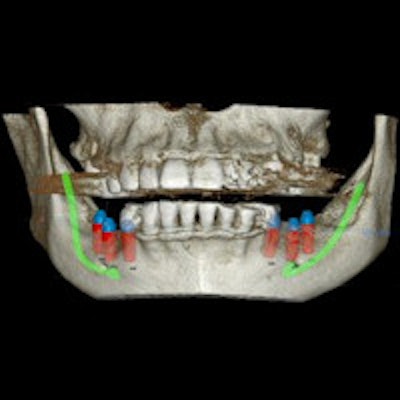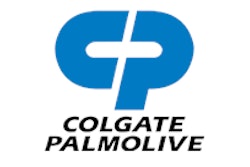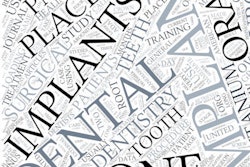
Patients with tooth-borne restorations, either fixed or removable, should be seen for a clinical exam at least every six months for the rest of their lives, according to recently issued guidelines from the American College of Prosthodontists (ACP).
However, if a patient is categorized as being at higher risk because of a number of factors, such as age, ability to perform oral self-care, and biological or mechanical complications, they should be seen more often than every six months, according to the ACP.
"These are the first [clinical practice guidelines] addressing patient recall regimen, professional maintenance regimen, and at-home maintenance regimen for patients with tooth-borne and implant-borne restorations. This document serves as a baseline with the expectation of future modifications when additional evidence becomes available," the authors wrote.
The guidelines have been published in the Journal of Prosthodontics (January 2016, Vol. 25:suppl 1, pp. S32-S40) and other journals, such as General Dentistry and the Journal of Dental Hygiene.
Complicated treatments
Patients who need prosthodontic care often have "significant previous dental treatment," due to a loss of teeth, tooth structure, and other factors. "Treatment plans to address patient needs using tooth- or implant-borne restorations require careful diagnosis, risk assessment, treatment planning, meticulous execution of care, and a long-term partnership with the patient and treatment team to maintain an enduring result," according to the authors.
With the goal of providing guidelines for a patient-recall regimen, professional maintenance regimen, and an at-home maintenance regimen for patients, the American College of Prosthodontists put together a panel of experts it appointed, along with the ADA, Academy of General Dentistry, and American Dental Hygienists' Association. These experts critically evaluated and debated recently published findings from two systematic reviews on this topic.
The panelists focused on the risks for failure of both tooth- and implant-borne restorations, and each clinical practice guideline was divided into patient recall, professional maintenance, and at-home maintenance recommendations.
“[Patients] should be advised to use oral topical agents such as toothpaste containing 5,000 ppm fluoride or toothpaste with 0.3% triclosan.”
As compliance is an issue across the oral health spectrum, the guidelines emphasize talking with these patients about their home care regimen.
For patients with multiple and complex restorations on existing teeth supporting (or surrounding the removable restoration), they should be advised to use oral topical agents such as toothpaste containing 5,000 part per million (ppm) fluoride or toothpaste with 0.3% triclosan, and to add supplemental short-term use of chlorhexidine gluconate when indicated, according to the guidelines.
Additionally, the dental office should take time to speak with patients who have tooth-borne fixed restorations about brushing twice a day and also using oral care aids such as the following:
- Dental floss
- Water flossers
- Air flossers
- Interdental cleaners
- Electric toothbrushes
In addition, it may seem obvious, but patients with tooth-borne removable restorations should be reminded not to sleep with the restoration in their mouth. The guidelines also recommend storing the prosthesis in the prescribed cleaning solution.
Eliminating bias
The panel members were aware that it was a potential source of bias if the authors of the systematic reviews considered also served as panel members during this review. To minimize this, each guideline was debated and justified in "an open and transparent format," according to the guideline authors.
Thus, the effect of "groupthink" may not be a source of bias in this baseline clinical practice guideline document. Conversely, having the same author group to draft the guidelines may be viewed as a strength of this document, due to the profound insight obtained by the author group during the systematic review process.
The authors noted that the review was funded in part by an unrestricted educational grant to the American College of Prosthodontists Education Foundation from Colgate-Palmolive.



















